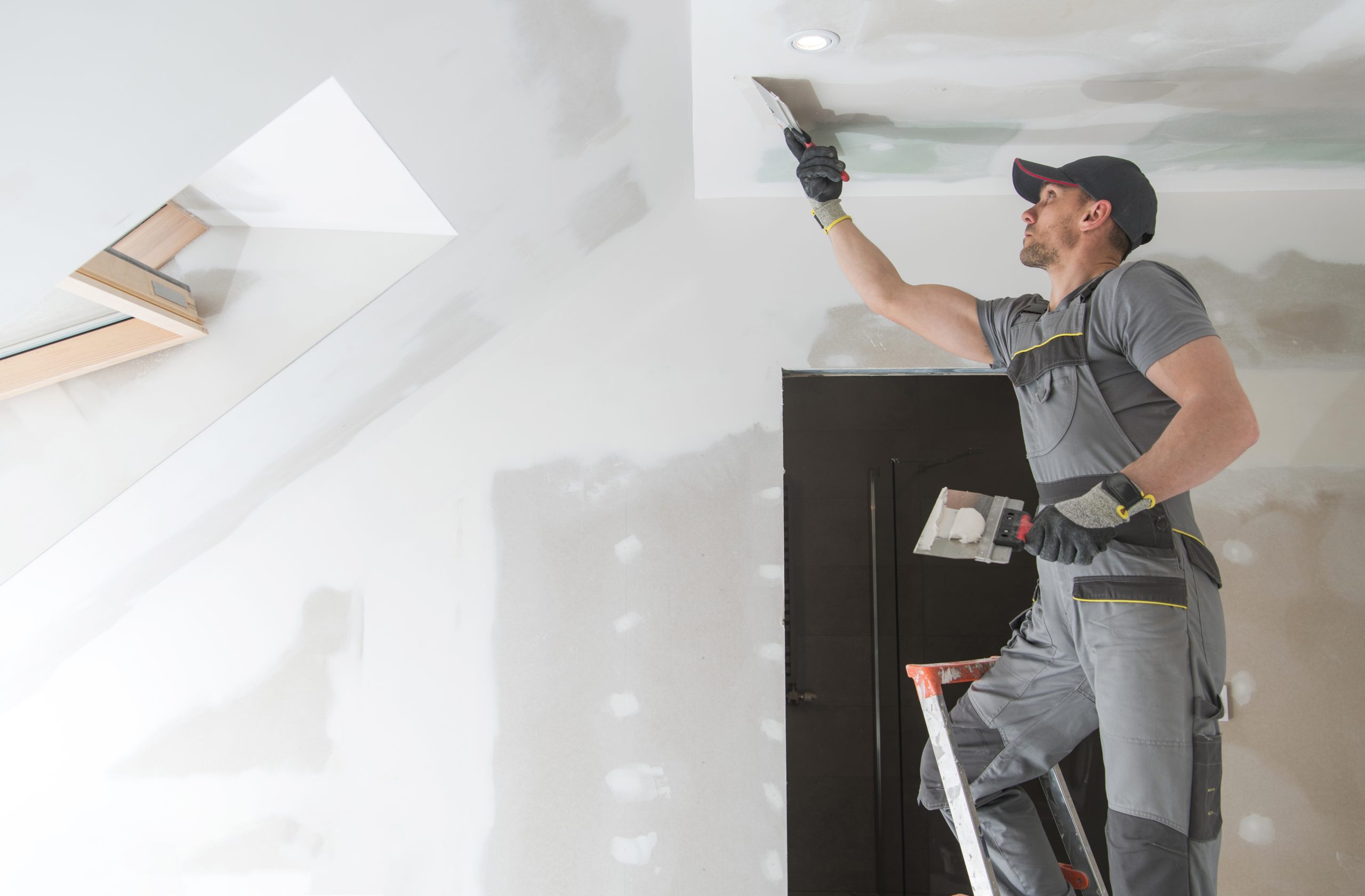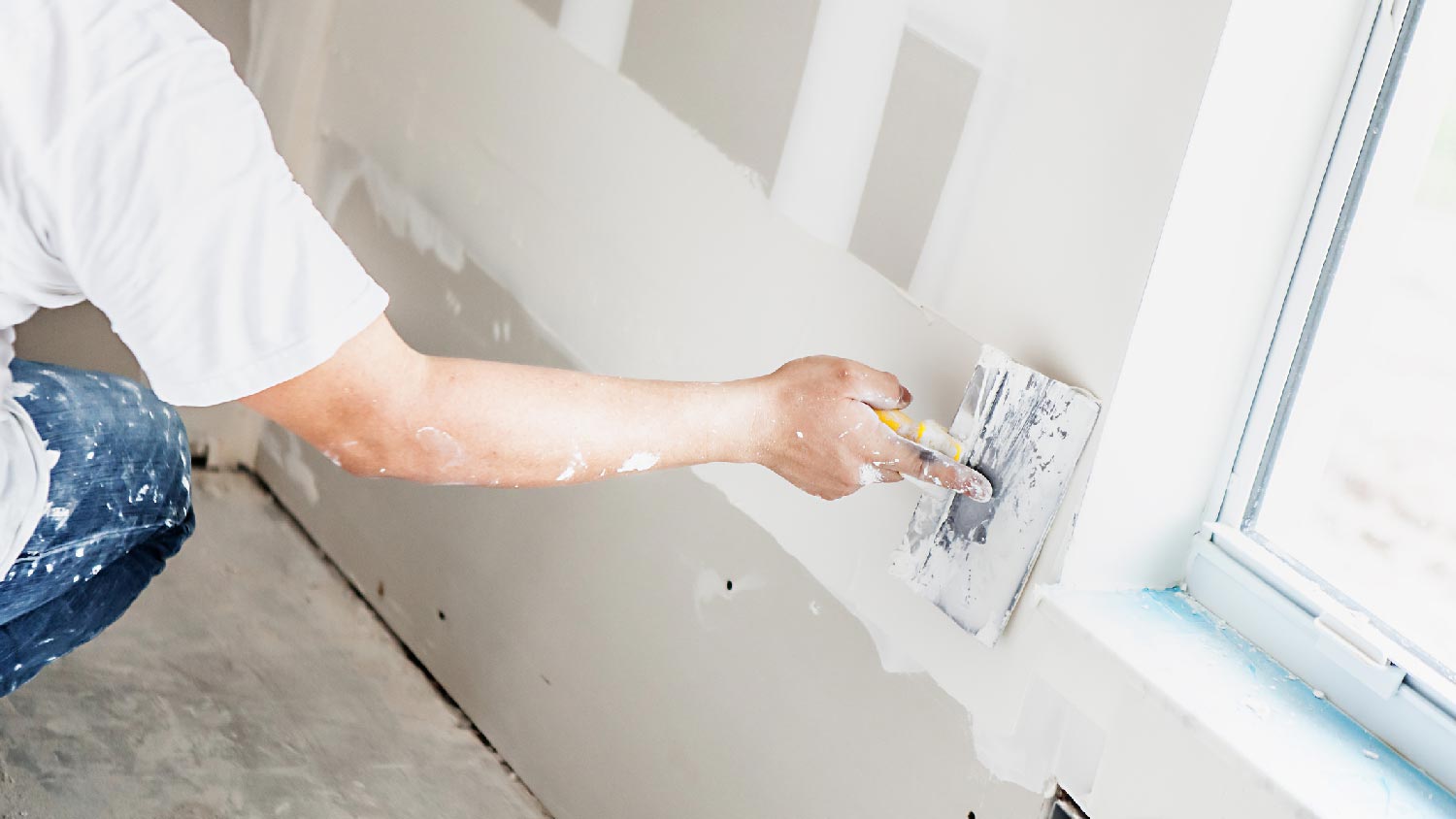Experience smooth results by working with experienced drywall contractors and painters in your area.
Crucial Tips for Effective Drywall Repair Service and Installment Methods
Reliable drywall repair and setup calls for a mindful technique. Recognizing the kinds of drywall and having the right devices is important. Exact measurements and proper strategies can considerably influence the outcome. Numerous ignore necessary steps like taping and fining sand, which can make or break the final look. As jobs proceed, common obstacles might arise that call for focus. Discovering these suggestions can bring about a much more effective and sleek surface.
Comprehending Various Sorts Of Drywall
Comprehending the various kinds of drywall is crucial for any effective repair work or installment task. Drywall, commonly referred to as plaster board, comes in several selections customized for particular applications. Criterion drywall is one of the most widely made use of kind, suitable for general interior wall surfaces and ceilings. Moisture-resistant drywall, frequently green in shade, is designed for locations vulnerable to moisture, such as cooking areas and restrooms. Fireproof drywall, typically tinted pink or purple, is engineered to stand up to greater temperatures and is typically made use of in garages or near furnaces. In addition, soundproof drywall aids minimize noise transmission, making it suitable for multi-family homes or recording studios. Specialized drywall, like concrete board, is utilized in damp areas like showers or bathtub borders. Comprehending these kinds helps in choosing the ideal material for each project, making certain longevity and effectiveness in repairs or brand-new setups.
Necessary Tools for Drywall Fixing and Setup
Having the right tools is vital for effective drywall repair service and installment. A quality energy blade is crucial for cutting drywall sheets precisely. A drywall T-square helps ensure straight edges, while a taping blade is essential for using joint compound efficiently over joints. In addition, a drywall saw permits removing harmed areas or fitting drywall around fixtures.
For hanging drywall, a power drill with drywall screws is important, as it enables quick and secure installment. A level is likewise essential to verify that the drywall is straight and properly straightened. Once it has actually dried out, a fining sand block or pole sander is important for smoothing out joint compound. Lastly, a gauging tape is essential for exact dimensions, stopping waste and guaranteeing a correct fit. Furnished with these devices, individuals can deal with drywall tasks successfully, resulting in professional-looking results.
Step-by-Step Guide to Fixing Holes and Cracks
When dealing with holes and splits in drywall, having the right tools and products is necessary for an effective fixing. This guide lays out the essential products and supplies a clear, step-by-step process to effectively bring back the surface. Comprehending these aspects will assist assure a smooth coating and resilient outcomes.
Devices and Materials Needed
A fully equipped toolkit is essential for effective drywall repair and installment. Secret devices consist of an utility blade for reducing drywall, a tape measure to ensure precise sizing, and a drywall saw for bigger holes. A putty blade is crucial for using joint compound smoothly, while a fining sand block or pole sander assists attain a seamless surface. For patching, a roll of fiberglass fit together tape or paper tape is necessary to enhance joints. In addition, a drill and screws are needed for safeguarding new drywall pieces. Vital materials include joint compound, guide, and paint to complete the repair service. Having these tools and materials on hand guarantees a smoother, more effective fixing procedure, producing professional-looking outcomes.
Repair Service Process Actions
Repairing holes and splits in drywall needs a methodical strategy to guarantee a smooth coating. The location bordering the damages should be cleansed extensively to remove dust and debris. Next off, for small fractures, a putty knife is utilized to use a joint compound uniformly over the location. For bigger openings, a patch is required; the damaged section is removed, and a brand-new piece of drywall is fitted in location, protected with screws. As soon as the Interior Painting patch is in position, joint substance is related to blend the edges. After drying, sanding the location smooth is crucial. Ultimately, the fixed surface should be keyed and repainted to match the bordering wall, making certain an unnoticeable repair service.
Techniques for Setting Up Drywall Panels
Mounting drywall panels requires cautious planning and precise implementation to ensure a smooth and expert coating. Initially, it is necessary to measure the wall surface space accurately and reduce the panels to fit, making sure that they straighten with the studs. Placing the panels flat is normally recommended, as this can improve the architectural stability and reduce the number of seams.
Making use of drywall screws, installers must secure the panels every 16 inches along the studs, making sure a firm hold. It is vital to stay clear of overdriving the screws, which can damage the paper surface area. For sides and edges, using an utility knife permits clean cuts and a tight fit.

Completing Touches: Taping, Mudding, and Sanding
Once the drywall panels are securely in place, the next essential action includes the complements of taping, mudding, and sanding. Insulation is essential for creating a smooth change between panels and hiding joints. A top quality drywall tape, either paper or fiberglass harmonize, must be applied over the seams, ensuring it adheres properly to the mud that will certainly be used following.
Mudding, or using joint compound, follows the taping process. This compound fills voids and smooths out the surface area. A very first layer should be used kindly, feathering the sides to blend with the drywall. After the preliminary layer dries, succeeding layers might be needed for a flawless coating.
Sanding is needed to achieve a smooth surface. A fine-grit sandpaper should be utilized to carefully smooth out any imperfections. Care must be taken to stay clear of over-sanding, which can damage the drywall - drywall contractors. Properly executed, these completing touches produce a professional look prepared for painting
Tips for Preserving Your Drywall After Installation
Keeping drywall after installation is important to preserving its look and structural integrity. Normal cleaning is needed; dirt and dust can collect, so gentle wiping with a wet towel is advised. Home owners must also check for any type of indications of wetness or mold and mildew, particularly in high-humidity areas like cooking areas and bathrooms. If any damage takes place, it's vital to resolve it without delay to protect against additional problems.
Using furnishings pads can aid avoid scrapes or damages from hefty things. Additionally, repainting the drywall with a top quality, cleanable paint gives an extra layer of protection and makes future cleansing much easier. Avoid making use of unpleasant cleansers or tools, as these can damage the surface. Preserving a stable interior environment with suitable humidity levels will help protect against contorting or breaking over time. By adhering to these suggestions, one can guarantee that drywall remains in excellent problem for years to find.
Frequently Asked Questions
The Length Of Time Does Drywall Require To Totally Dry After Installation?

Can I Set Up Drywall Over Existing Drywall?
Yes, drywall can be set up over existing drywall, yet it is necessary to ensure the underlying surface area is safe and effectively prepared. This technique can boost insulation and decrease setup time, though it might include weight.
What Is the Ideal Way to Soundproof Drywall?
The finest way to soundproof drywall involves making use of specialized soundproofing products, such as resilient networks, acoustic caulk, and sound-dampening drywall. These strategies properly reduce audio transmission in between areas, improving total acoustic efficiency in living areas.
How Do I Select the Right Drywall Thickness?
To select the appropriate drywall thickness, take into consideration the application and area. Standard household walls typically utilize 1/2 inch, while ceilings or specialized locations may require 5/8 inch for additional strength and soundproofing abilities.
Are There Eco-Friendly Drywall Options Available?
Yes, environmentally friendly drywall alternatives are offered. These consist of products made from recycled products, plaster boards with reduced unpredictable natural compounds (VOCs), and those utilizing lasting production procedures, using environmentally-conscious options for building and restoration projects.
Having the right devices is vital for efficient drywall repair service and installment. For hanging drywall, a power drill with drywall screws is vital, as it enables secure and fast setup. Trick tools consist of an utility knife for cutting drywall, a tape procedure to guarantee exact sizing, and a drywall saw for larger openings. Yes, drywall can be installed over existing drywall, yet it is crucial to guarantee the underlying surface area is safe and properly prepared. The finest method to soundproof drywall involves utilizing specialized soundproofing materials, such as resistant channels, acoustic caulk, and sound-dampening drywall.